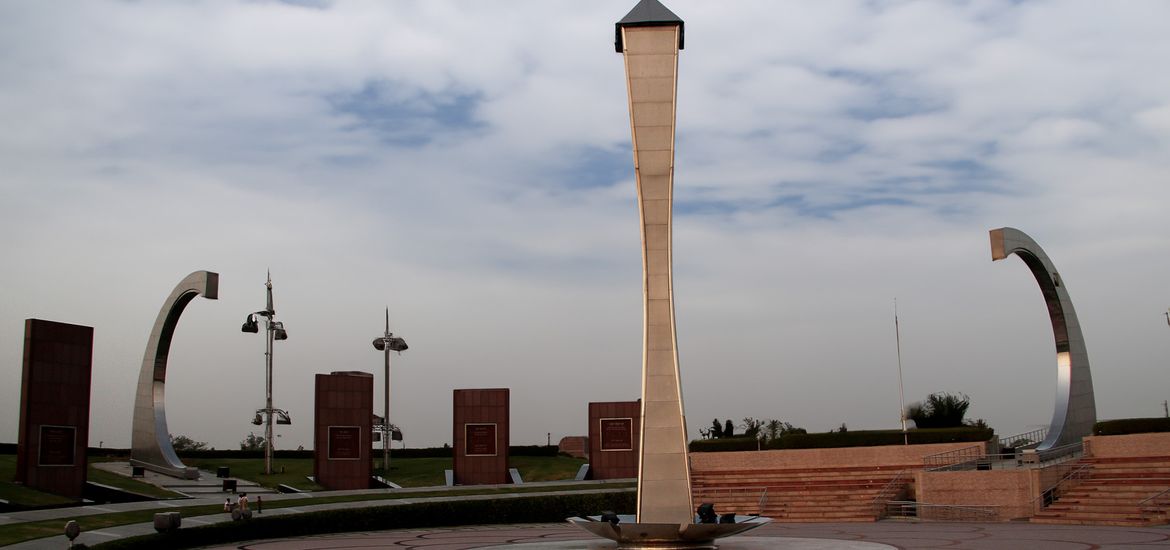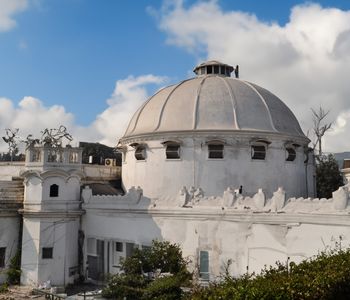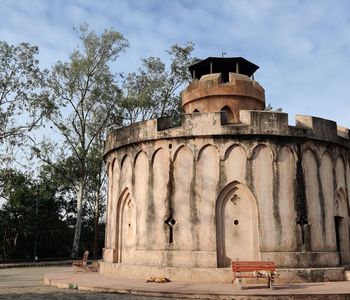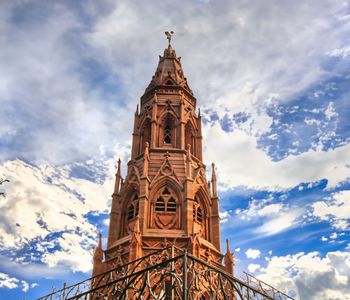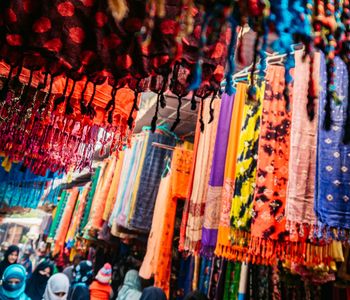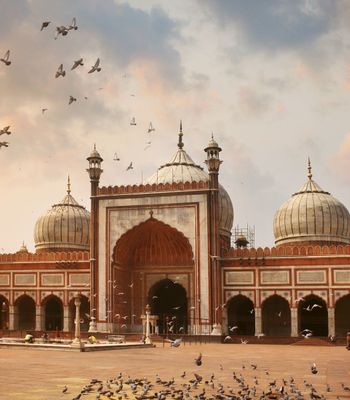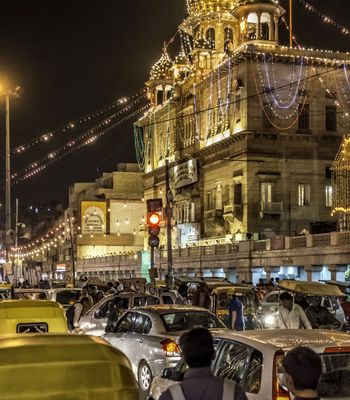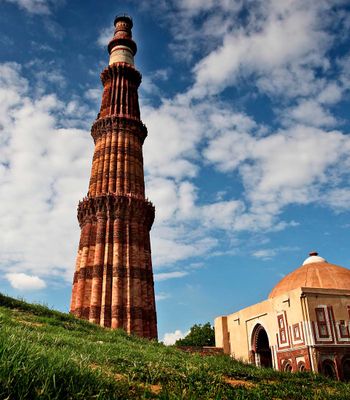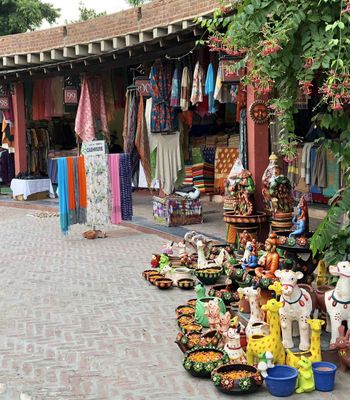Tucked away along the historic stretch of National Highway 1, the Guru Tegh Bahadur Memorial is not your typical tourist spot; it’s a place that quietly stirs your thoughts. Unlike the bustling markets and loud monuments of Delhi, this memorial speaks in silence. It tells the story of a man who gave his life not for power or land but for the freedom of faith.
Guru Tegh Bahadur, the ninth Sikh Guru, made the ultimate sacrifice to protect the rights of others, and this space captures that spirit through powerful architecture, peaceful landscapes, and a compelling light and sound show that stays with you long after you leave.
A Legacy of Courage: Honouring Guru Tegh Bahadur
Built along the historic Sher Shah Suri Marg, now National Highway 1 connecting Delhi to Punjab, the Guru Tegh Bahadur Memorial spreads over nearly 12 acres of thoughtfully designed space. Guru Tegh Bahadur travelled across India spreading the message of Guru Nanak and stood firmly for the right to religious freedom.
He sacrificed his life in Delhi to protect Kashmiri Pandits from forced conversions under Emperor Aurangzeb. His martyrdom, along with that of his three brave followers, is remembered as a defining moment in the fight for human rights.
Delhi’s historic Gurudwaras, Sis Ganj (the site of his execution) and Rakab Ganj (his cremation site) are deeply connected to his legacy.
The Soulful Architecture of Guru Tegh Bahadur Memorial
At the centre of the complex rises a striking 24-metre-high obelisk designed to symbolise the towering courage and sacrifice of Guru Tegh Bahadur, who stood up for the right to religious freedom. The obelisk’s base features lotus-petal-like structures, representing purity, peace, and the Guru’s unwavering strength and charitable spirit.
Surrounding this central structure are three elegantly designed arches dedicated to the Guru’s three loyal disciples (Bhai Mati Das, Bhai Sati Das, and Bhai Dayal Das) who embraced martyrdom alongside him. These arches aren't just architectural elements. They stand as a reminder of unity, loyalty, and shared purpose.
Adding deeper layers of meaning are the ten monoliths, each representing one of the ten Sikh Gurus. These monoliths are inscribed with the core teachings of Sikhism, such as remembering God through Naam Japna, earning with honesty (Kirat Karo), selfless sharing (Vand Chakko), equality of all, and living a life of truth and service.
What makes them truly accessible is that the messages are engraved in four major Indian languages, Punjabi, Hindi, Urdu, and English, so visitors from different backgrounds can connect with their wisdom.
The layout of the memorial is open and harmonious, with wide pathways, manicured lawns, and open skies, creating a space that feels peaceful and inspiring. The use of stone, symmetry, and minimalist design elements gives the memorial a timeless feel, allowing the focus to stay on its message and meaning.
Lights, Legends & Leisure: The Magic of Guru Tegh Bahadur Memorial
One of the biggest highlights of the memorial is its spectacular light and sound show, built around the theme of Panchtatva: void, air, earth, water, and fire, each element reflecting the spirit of Guru Tegh Bahadur.
Touted as North India’s largest installation artwork, the show features music by Ustad Amjad Ali Khan, vocals by Daler Mehndi, and voiceovers by Om Puri and Kabir Bedi. Running daily between 7:30 a.m. and 9:40 p.m. in Hindi, Punjabi, and English, the 25-minute show is a must-watch.
Beyond the show, the memorial invites you to unwind, stroll through green lawns, enjoy a snack at the café, or capture stunning photos of the architecture. There are also well-equipped halls available for religious events or personal celebrations like birthdays.
Seasonal Guide: Visiting Guru Tegh Bahadur Memorial
The best time to explore the Guru Tegh Bahadur Memorial is from October to March when Delhi enjoys cooler and more pleasant weather. This makes it easier to walk around the expansive complex, relax on the green lawns, and truly take in the peaceful surroundings.
Early mornings are quiet and ideal for reflection, while evenings are perfect for catching the impressive light and sound show without the discomfort of daytime heat. Summers in Delhi can be harsh, so winter and early spring are definitely the most comfortable and enjoyable seasons to visit.
The memorial welcomes visitors throughout the week, with timings that shift slightly with the seasons. If you're planning a visit between March and October, the gates open from 10:00 AM to 6:00 PM. During the cooler months, from November to February, the memorial opens earlier, from 8:00 AM to 5:30 PM, giving you more time to wander before dusk sets in.
Entry is refreshingly affordable—just ₹10 for adults and ₹5 for children under 12. If you’re planning to catch the mesmerising light and sound show, tickets are priced at ₹60 for adults and ₹30 for children.
Getting There: How to Reach the Guru Tegh Bahadur Memorial?
Located in Delhi, the memorial is easily accessible via metro, bus, taxi, or personal vehicle. Its proximity to major transport hubs makes visiting convenient for both locals and tourists.
By Air
The nearest airport is Indira Gandhi International Airport (DEL), located about 35 km from the memorial. Taxis and app-based cabs are readily available for a smooth journey.
By Train
New Delhi Railway Station is the closest major railhead, situated approximately 17 km away, offering easy connectivity to the memorial via road transport.
By Road
Located along National Highway 1, the Guru Tegh Bahadur Memorial isn’t directly connected by the metro. The closest station, Jahangirpuri (Yellow Line), is about 25 minutes away by road. Local buses also connect to the area, with the nearest bus stop being ISBT Kashmere Gate, about 30 km away.
The Guru Tegh Bahadur Memorial is more than just stone and structure; it is a tribute to timeless values, courage, freedom, faith, and humanity. As you walk through its open lawns and read the engraved teachings, you don’t just learn history; you feel it. In the heart of a fast-moving city, this memorial invites you to slow down, look inward, and honour the legacy of a true hero.
